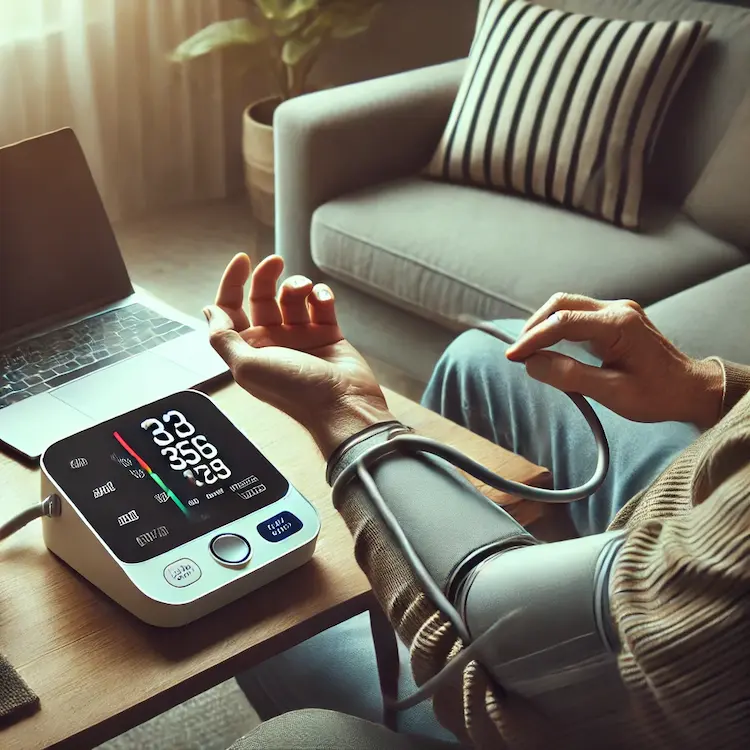When it comes to monitoring blood pressure, accuracy and ease of use are key. The two main types of sphygmomanometers—manual and digital—each offer unique advantages and limitations. Understanding their differences can help you make an informed decision about which one suits your needs best. This article will thoroughly explore manual vs digital sphygmomanometers, comparing their features, benefits, and potential drawbacks, while also addressing the societal and health impacts of blood pressure monitoring. By the end, you’ll have a clearer understanding of which option is best for you.
What Are Sphygmomanometers?
A sphygmomanometer is a medical device used to measure blood pressure. It consists of an inflatable cuff, a pressure gauge, and sometimes a stethoscope (in the case of manual models). Blood pressure readings are expressed in two numbers: systolic (the pressure when the heart beats) and diastolic (the pressure when the heart rests). Accurate blood pressure readings are crucial for diagnosing hypertension, a condition that can lead to heart disease and stroke if left untreated.

Types of Sphygmomanometers
Manual Sphygmomanometers
Manual sphygmomanometers, also known as mercury or aneroid sphygmomanometers, are typically used by healthcare professionals. These devices require the user to inflate the cuff manually and listen for the sounds of blood flow using a stethoscope. The device’s gauge provides the blood pressure reading, which is measured by the clinician.
Key Features:
- Gauge Type: Often uses mercury or aneroid gauges.
- Inflation: Manual inflation via a rubber bulb.
- Listening: Requires the use of a stethoscope to detect blood flow sounds (Korotkoff sounds).
- Training: Requires professional training for accurate readings.
Digital Sphygmomanometers
Digital sphygmomanometers, also known as automatic or electronic sphygmomanometers, are more user-friendly and widely available for home use. These devices automatically inflate the cuff and display the blood pressure readings digitally on a screen. Digital models often include additional features like heart rate monitoring and irregular heartbeat detection.
Key Features:
- Display: Shows readings digitally on an LCD screen.
- Inflation: Automatic inflation with a push of a button.
- Ease of Use: Simple operation with no stethoscope needed.
- Portability: Compact and easy to use at home or on the go.
Manual vs. Digital: A Comparison
Now that we’ve outlined the basic features of both types of sphygmomanometers, let’s delve deeper into their pros and cons to understand which one may be best suited for different users.
Accuracy
- Manual Sphygmomanometers: Manual models are generally considered more accurate than digital models when used by trained professionals. Since the measurement depends on the clinician’s skill and ability to detect Korotkoff sounds, accuracy can vary based on experience.
- Digital Sphygmomanometers: While digital models are accurate in most cases, their reliability can sometimes be affected by factors like cuff size, body position, or even the device’s quality. They are more accurate for individuals without significant hypertension or cardiovascular conditions but might be less reliable in cases where precise measurements are required.
- Verdict: Manual sphygmomanometers tend to be more accurate in controlled settings, especially when used by a trained professional. However, digital models are generally accurate for home use if used correctly.
Ease of Use
- Manual Sphygmomanometers: Manual devices require more skill and practice to use effectively. Healthcare professionals typically perform the measurements, though it can be learned with practice. The need for a stethoscope adds to the complexity.
- Digital Sphygmomanometers: Digital sphygmomanometers are incredibly easy to use. With the press of a button, the device automatically inflates the cuff and provides a reading. No stethoscope is required, making them ideal for home use.
- Verdict: Digital sphygmomanometers are the clear winner in terms of ease of use, especially for those without medical training.
Portability and Convenience
- Manual Sphygmomanometers: Manual models tend to be bulkier and require more effort to use. The need for a stethoscope adds to the inconvenience, making them less portable for everyday use.
- Digital Sphygmomanometers: Digital models are compact, lightweight, and easy to carry. Most come with a carrying case, making them convenient for home use or travel.
- Verdict: Digital sphygmomanometers are more portable and convenient for home use and travel.
Cost
- Manual Sphygmomanometers: Manual sphygmomanometers tend to be more affordable, especially aneroid models. However, the cost can increase if the model includes a mercury gauge, which requires more maintenance.
- Digital Sphygmomanometers: Digital models tend to be more expensive, especially if they come with additional features like heart rate monitoring, Bluetooth connectivity, or multiple user memory functions.
- Verdict: Manual sphygmomanometers are generally cheaper, but digital models offer more value for the price if you prioritize ease of use and extra features.
Maintenance and Durability
- Manual Sphygmomanometers: Manual sphygmomanometers are durable and require minimal maintenance. However, mercury models can be hazardous to the environment if damaged, and aneroid models may require recalibration over time.
- Digital Sphygmomanometers: Digital sphygmomanometers require more maintenance, including battery replacements and occasional calibration. They are also more prone to damage due to their electronic components.
- Verdict: Manual sphygmomanometers are more durable, while digital models require more attention and care.
Health and Societal Impact
Accurate blood pressure monitoring is crucial for preventing cardiovascular diseases like hypertension, heart attacks, and strokes. According to the World Health Organization, high blood pressure is a leading cause of death globally, affecting an estimated 1.13 billion people. Effective monitoring can help detect hypertension early, leading to better management and healthier outcomes.
While healthcare professionals often rely on manual sphygmomanometers for precise measurements, digital sphygmomanometers have made it easier for individuals to monitor their blood pressure at home. This shift to home monitoring helps people better manage their health and stay informed about their cardiovascular status. However, improper use of these devices can lead to inaccurate readings, which may hinder efforts to manage hypertension.
Practical Tips for Blood Pressure Monitoring
- Choose the Right Cuff Size: Ensure the cuff fits snugly around your upper arm for accurate readings. If the cuff is too tight or too loose, your reading may not be accurate.
- Take Readings at the Same Time Each Day: Blood pressure can fluctuate throughout the day. Taking readings at the same time helps maintain consistency.
- Avoid Caffeine, Exercise, and Stress Before Measuring: These factors can temporarily raise blood pressure, leading to inaccurate readings.
- Rest for a Few Minutes Before Measuring: Sit calmly for five minutes before taking a reading to ensure accurate results.

Conclusion
Both manual and digital sphygmomanometers have their advantages and drawbacks. For healthcare professionals or individuals seeking highly accurate measurements, a manual sphygmomanometer may be the best choice. However, for those looking for ease of use, convenience, and portability, a digital sphygmomanometer is the ideal option.
Key Takeaways:
- Manual sphygmomanometers are more accurate when used by trained professionals.
- Digital sphygmomanometers are easier to use and ideal for home monitoring.
- Proper cuff size and technique are essential for accurate blood pressure readings.
- Both types contribute to better health management, particularly in the fight against hypertension.
Actionable Recommendations:
- If you need precise readings and are trained in their use, opt for a manual sphygmomanometer.
- For home use or if you prefer a more user-friendly device, consider a digital sphygmomanometer.
- Ensure your blood pressure monitor is calibrated regularly for the most accurate results.


